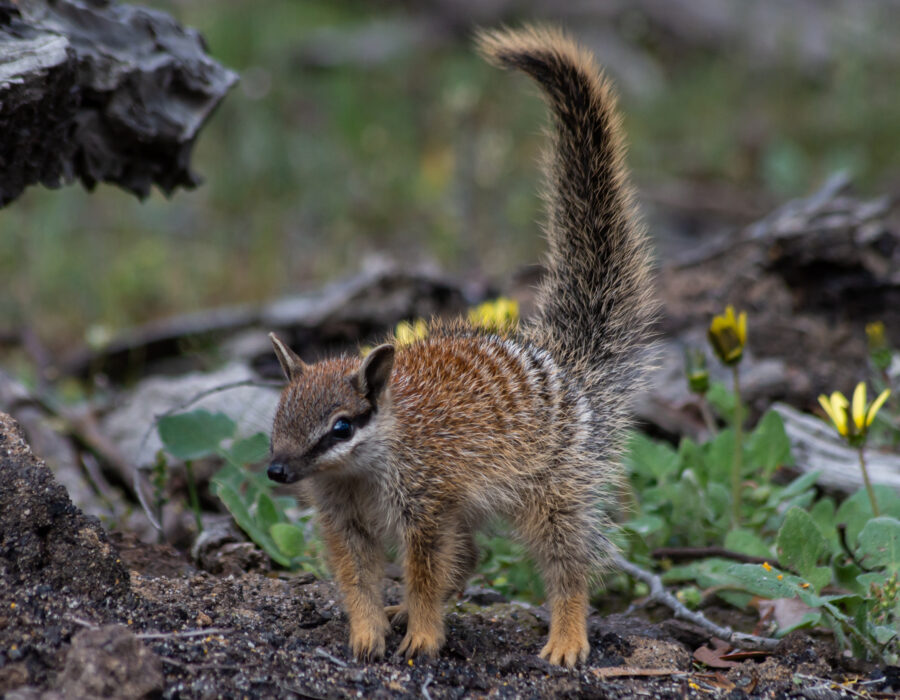Too hot to handle: rising temperatures proving too much for endangered numbats

Numbats are becoming prone to overheating – reaching a body temperature greater than 40°C within as little as ten minutes of activity in the sun, despite using techniques such as raising or flattening their fur to regulate body temperature.
This new information came to light following research at Dryandra Woodland National Park in Western Australia that saw environmental physiologist Dr Christine Cooper and her team use thermal imaging and heat balance modelling to examine the thermal ecology of numbats.
The numbat (Myrmecobius fasciatus) is one of very few strictly diurnal – day active – native Australian mammals. Most are either nocturnal – night active – or crepuscular – venturing out at dawn or dusk.
“Active only during the day and with an exclusive diet of termites, numbats are often exposed to high temperatures and gain heat from direct sunlight,” explained Christine, who currently works with Curtin University’s School of Molecular and Life Sciences. “Even in the shade, they gain heat from radiation from the ground, rocks and trees.”
Numbats have a unique coat structure that uses the sun to heat up more productively than other mammals, helping to cope with a low-nutrient diet and small size, which would typically make it difficult to maintain body heat without metabolic heat production.
“Numbats have a very sparse outer coat and a really dense inner coat, an arrangement that lets the heat in and then retains it close to the skin,” Christine said.
“That’s good if you want to save energy because it means that rather than producing your own metabolic heat, you can very efficiently exploit solar heat as an avenue for keeping warm.”
However, with temperatures increasing due to climate change, this special method of keeping warm may become detrimental.
“Our heat balance model indicates that high environmental heat loads limit foraging in open areas to as little as 10 minutes and that climate change may extend periods of inactivity, with implications for future conservation and management,” Christine said.
Now restricted to two remaining natural populations in Western Australia’s south – Dryandra Woodland, near Narrogin, and Perup Nature Reserve, near Manjimup – and in some additional re-introduced populations in South Australia, the species used to be found across arid and semi-arid woodland habitat in southern Australia and in natural populations in South Australia, New South Wales, Victoria and the Northern Territory.
“With an estimated population of only about 2000, numbats are already under threat from habitat loss and introduced predators like foxes and feral cats,” Christine said.
“Regarding habitat requirements, our findings show the importance of considering temperature and shade availability when planning translocations to conserve this endangered species, particularly given our warming climate.”

Even when shade is available, higher overall temperatures are reducing how long numbats can spend outside during the day, impacting how much time they can forage for their required 20,000 daily termites.
“The challenge of high environmental heat gain, especially for numbats in the more arid parts of their range, will be exacerbated by global warming, which not only impacts mean ambient temperature and average annual rainfall but also results in increased frequency, intensity and duration of extreme weather events such as heatwaves,” Christine said.
According to Christine, it is essential to develop a further understanding of the ecological consequences of climate change so scientists and conservationists know how best to protect this incredible species in the future.


